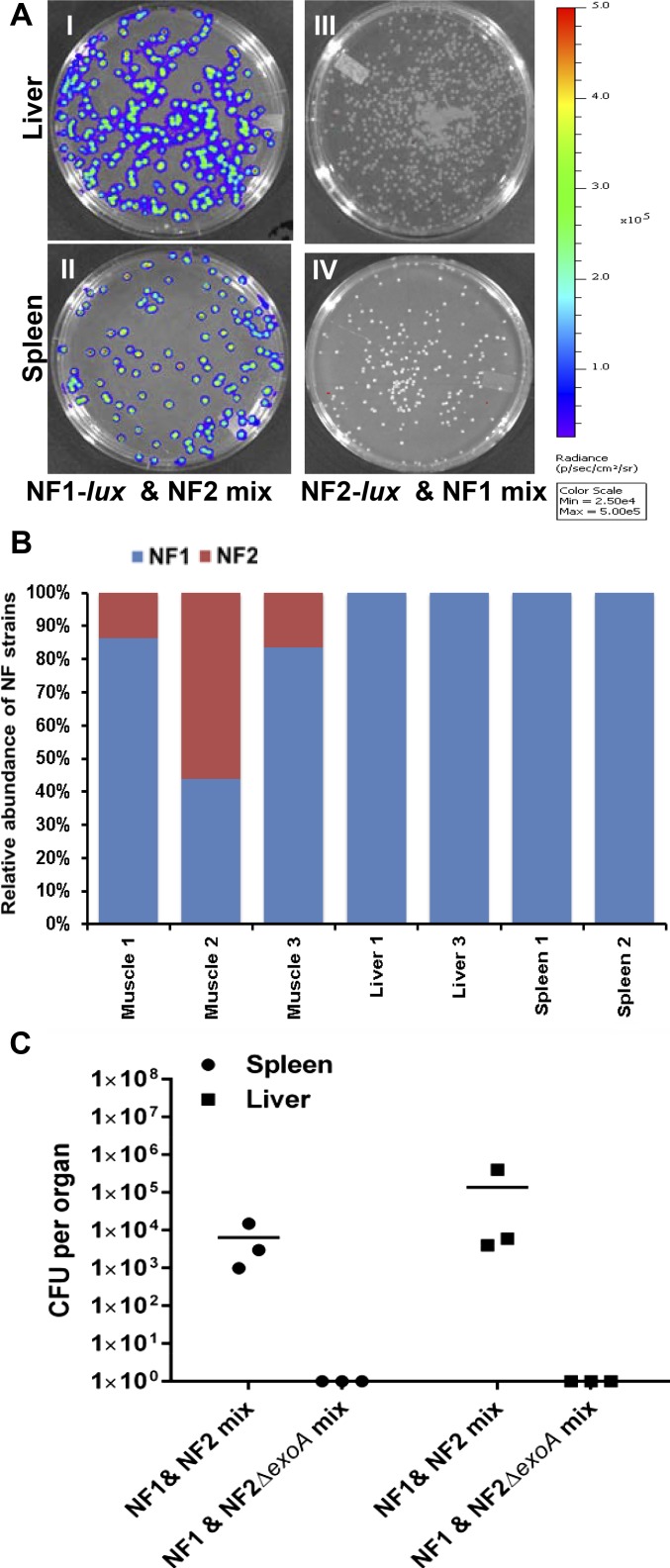Fig. S2.
Selective dissemination of A. hydrophila strains in a mouse model. Bacterial dissemination to spleen and liver after 24 h of infection with NF1-lux and NF2, or NF1 and NF2-lux mixed cultures was observed by bioluminescence of colonies. (A) Representative images displayed confirmed that all of the disseminated bacterial colonies are NF1 in liver and spleen (I–IV). Further, DNA isolated from spleen and liver tissue samples from NF1 and NF2 mixed infections were subjected to sequencing and metagenomic analysis to determine identity of the strains (either NF1 or NF2) disseminated to these organs (B). The resulting analysis showed that the bacterial DNA recovered from the peripheral organs was specific to NF1. The quality and the concentration of DNA from liver 2 and spleen 3 samples were not high for sequencing. In addition, mice (n = 3) were infected with a mixture of NF1-lux and NF2, or NF1 and NF2∆exoA at a dose of 2 × 108 cfu (1 × 108 cfu per strain) per animal via i.m. route. After 24 h, entire spleen and liver from each animal were homogenized and bacterial counts were determined. The horizontal lines represent the arithmetic means of the bacterial counts (C). Samples collected from animals infected with NF1 and NF2∆exoA showed no dissemination of bacteria to peripheral organs.

